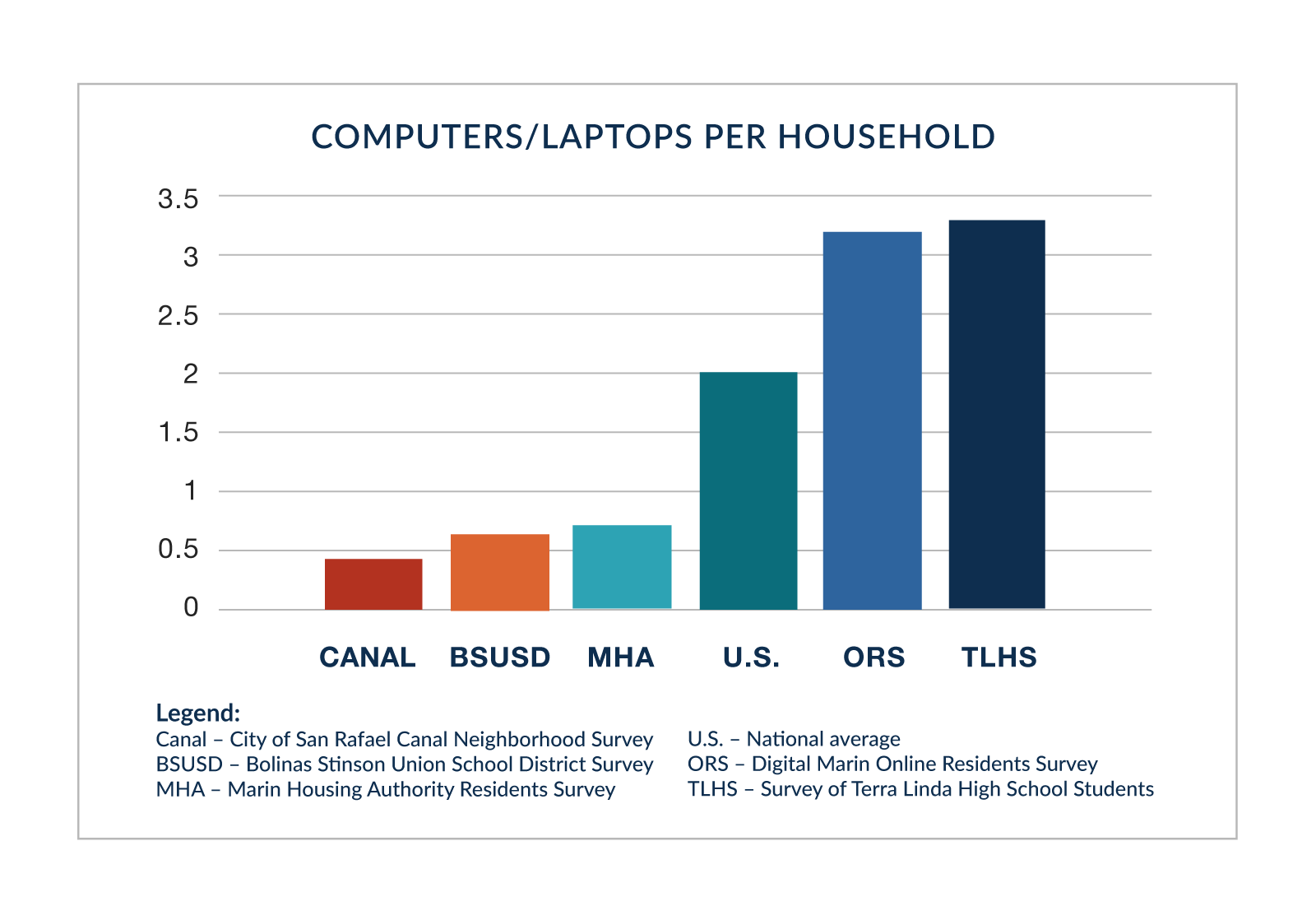Online opportunities
Goal
Everyone in Marin can take advantage of all online opportunities
Key performance indicators
- Increase number of people with devices by using data collected through the needs assessment process, other sources, and additional surveys to establish a baseline to compare to future survey findings.
- Improve level of digital literacy throughout Marin by using data collected through the needs assessment process and other sources to establish a baseline to compare to future survey data.
- Improve users’ ratings of online services by collecting data through surveys and other collection methods to establish a baseline and compare it to future results.
Strategies
Coordinate and expand digital literacy training in Marin
Participants in the needs assessment recommended two high level actions. First, creating standards for Marin to better define what digital literacy means and help residents and businesses reach at least a basic level of literacy. Also, identifying and coordinating the various existing digital literacy training programs and filling the gaps to ensure various methods of training are available to meet Marin’s diverse needs. For example, older adults say that they need training programs that tailor the content, speed, and delivery method to their needs.
Expand community-based programs to provide end user devices and support
A 2020 study about consumer electronics found that U.S. households have an average of two computers. When comparing computers/laptops per household in Marin, survey respondents reported a range of less than one half (.4) per household in the Canal Neighborhood through 3.3 per household for students at Terra Linda High School in San Rafael. Even when they have adequate devices to access the Internet, some residents and business owners reported that they did not know how to take advantage of the capabilities and features, with some reporting that they never took their device out of the box.

Help organizations create easy to use digital services that work for everyone
Participants from every sector expressed frustration with the difficulty in using online services. They reported poor experiences such as struggling with applications with poor user interfaces that are hard to operate or do not work on a mobile phone, do not follow digital accessibility requirements, or require scanned versions of documents instead of pictures.
Context
Despite its relative wealth, Marin has residents who suffer from the digital divide. The needs assessment found that many people lack robust devices to access the internet, digital literacy, and adequate technical support. While availability of high-quality broadband is important, these other needs must be met for everyone in Marin to thrive in the digital world.
The needs assessment revealed a device disparity among Marin’s residents. Devices include computers, laptops, tablets, mobile phones, landlines, and Internet of Things (IoT). When asked how many devices are connected to their home internet service, respondents to the Online Residents Survey reported 8.5 per household. In contrast, respondents to a survey conducted of residents in Marin Housing Authority’s subsidized housing reported 2.6 per household. In the Canal Neighborhood, 57% of households reported not having a computer at home and 37% of students in the Bolinas-Stinson Union School District reported not having an adequate device at home.
57% of households surveyed in one neighborhood reported not having a computer at home.
—City of San Rafael Survey of Residents in the Canal Neighborhood
Even if they have devices, some residents and business owners report not knowing where to begin. They also lack knowledge of how to perform tasks such as signing up for an email account, requesting an Uber, or participating in a telehealth session. The research also revealed that various methods and types of training are needed. For example, online digital literacy training does not work when someone is unsure of how to get on the internet. The needs assessment also revealed that digital literacy training is needed for public service employees and educators.
